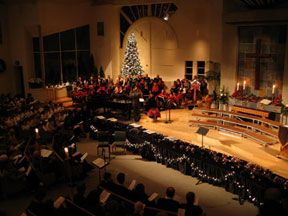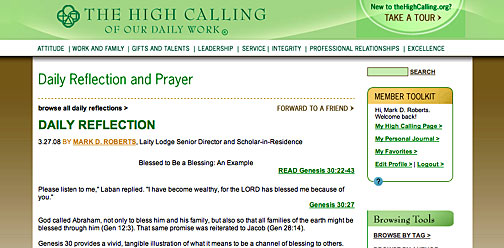Part 10 of series: Choosing a Church: Some Recommendations
Permalink for this post / Permalink for this series
From a biblical point of view, when a person enters into a relationship with Jesus Christ through faith, that person also becomes a member of the body of Christ, the interconnected network of all believers in Jesus. Each member of the Christ’s body is expected to invest deeply in the lives of others, both receiving and giving care, prayer, and love.
Many churches provide contexts in which you can experience this sort of thing in reality. Unfortunately, many churches do not. They have bought into the non-biblical vision of the church as a provider of services. Consumers (read “church members”) come to church for what they need: inspiration, hope, teaching, etc. They may choose to chip in to help pay for these provisions, or they may not. But, at any rate, when they’re done getting their needs met, they leave and go about their business until another need for the church arises.
 This vision of church life is often embodied in many of a church’s core realities. Consider, for example, the design of the classic church sanctuary. Whether we’re talking about a giant cathedral or a small country chapel, this classic design includes a stage on which the action occurs (called a chancel or altar). There are seats for the audience (called pews for the congregation), so they can see what’s happening on the stage. The seats are designed to facilitate face-forward observation and little else. The main door into the sanctuary opens onto the street, so people can come from the world into the sanctuary, observe and receive, and then go back out into the world with minimal interaction with others. This is not only thought to be okay, it is encouraged by the very architecture of thousands of church buildings. (Photo: On the contrary, when we designed our sanctuary at Irvine Presbyterian Church, we intentionally made the entrance contiguous to the patio. One could not enter or exit the church without passing through the folks on the patio.)
This vision of church life is often embodied in many of a church’s core realities. Consider, for example, the design of the classic church sanctuary. Whether we’re talking about a giant cathedral or a small country chapel, this classic design includes a stage on which the action occurs (called a chancel or altar). There are seats for the audience (called pews for the congregation), so they can see what’s happening on the stage. The seats are designed to facilitate face-forward observation and little else. The main door into the sanctuary opens onto the street, so people can come from the world into the sanctuary, observe and receive, and then go back out into the world with minimal interaction with others. This is not only thought to be okay, it is encouraged by the very architecture of thousands of church buildings. (Photo: On the contrary, when we designed our sanctuary at Irvine Presbyterian Church, we intentionally made the entrance contiguous to the patio. One could not enter or exit the church without passing through the folks on the patio.)
Of course you can find churches with sanctuary doors opening to the interior of the church campus where genuine fellowship is hard to find. And you can find churches with traditional architecture in which you’ll quickly be folded into genuine fellowship. The main point isn’t the architecture, but rather the reality of genuine fellowship and the existence of many points of entry for new people. Some churches do pretty well with the members-caring-for-each other idea, but they make it difficult for new people to join the relational network. You need a church in which genuine fellowship is present and you can join in.
In small churches, you may be able to become an active part of the community simply by showing up at all-church events (worship services, potlucks, mission projects, etc.). In most churches, however, and especially in large churches, genuine Christian fellowship necessarily happens in smaller groups (classes, covenant groups, prayer groups, mission groups, etc.).
Let me emphasize that genuine Christian fellowship isn’t just friendly handshakes and greetings on the patio after church. It necessarily involves a much deeper sharing of life. It requires a context in which “If one member suffers, all suffer together with it; if one member is honored, all rejoice together with it” (1 Cor 12:26). This sort of thing requires intimacy, longevity, and mutual commitment.
So, when you’re looking for a church, I’d encourage you to examine online and printed information for evidence of ample contexts for genuine fellowship. Are there Bible studies? Men’s groups? Women’s groups? Prayer groups? Sunday classes? Midweek gatherings? etc. etc. etc. If so, then you may have found a church where you can become involved in true fellowship. Try out some of these groups to see if you might fit there. Your experience of the people in the church will help you discern whether they are welcoming of new people, and therefore will be eager to include you in their fellowship.
More from Beliefnet and our partners

